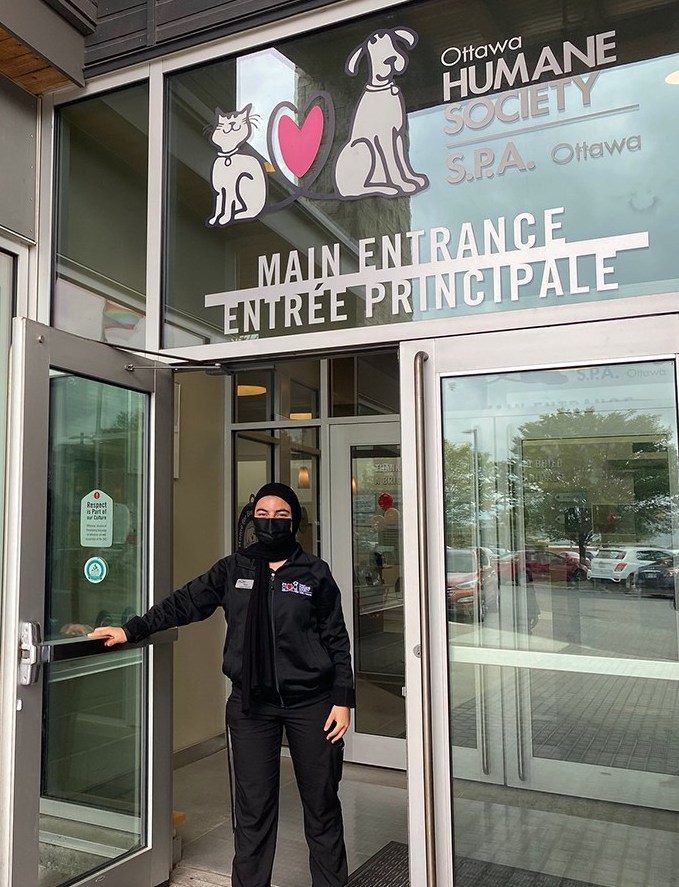News, ideas & inspiration from industry leaders

Ottawa Humane Society: Maintaining Growth & Success During Crisis
Growing and maintaining success is a challenge that all shelters face. This challenge becomes even more daunting when you add in unexpected environmental factors—such as a global pandemic. Yet as administrators of the SeeDS program, an assessment tool designed to support the health and well-being of private and public animal welfare organizations, we know first-hand that it is possible to overcome these obstacles. We had the pleasure of seeing one of our clients improve substantially over time, and then maintain their growth and success throughout the pandemic.
Ottawa Humane Society (OHS) has been participating in SeeDS since 2015. In previous assessments, the shelter struggled, as many do, with communication, stress, and burnout. After participating in SeeDS and getting specific recommendations from us to address these issues, OHS leadership actively integrated our feedback into their five-year plan. In 2022, they received a glowing report for their bi-annual assessment, showing that they not only improved in the areas of concern, but also maintained growth throughout the pandemic.
Bruce Roney, CEO at OHS, met with our team to share his top three strategies to keep momentum going.
Communicate—Concisely & Regularly
Roney attributes OHS’ ability to handle change and roll with the punches largely to their communication strategy, including a weekly bulletin that updates employees on need-to-know info (e.g., updated COVID-19 deadlines, upcoming shelter events). According to Roney, there are 2 key components the bulletin’s success. “First, keep it brief,” he says. “Employees can become overwhelmed with too much information being thrown at them, so keep it to just the things they need to know to do their jobs.
Second, make the communication accessible. If half of your employees are working from home, an in-person bulletin won’t reach everyone. Be sure to send it via email and post in your shelter.
Standard Operating Procedures
According to the recent assessment, one of OHS’ biggest strengths is their standard operating procedures (SOPs). Many shelters struggle with creating and implementing SOPs, so we asked Roney what OHS does differently. “Leverage technology to make sure everyone is on the same (virtual) page,” he says. Printed copies of SOPs can be useful for employees who don’t have easy access to a computer, but they can often be a source of confusion and misinformation if they aren’t properly updated. Roney recommends that employees reference SOPs through a computer system, so they are always seeing the most recent information. If printed SOPs need to be used, take care to recycle outdated ones and print new ones whenever a change is made.
Dealing with Burnout
Shelters work hard to prevent employee burnout, and working through a crisis creates an added layer of difficulty when it comes to this issue. Roney has been at OHS for over 20 years, and acknowledges that working in crisis mode for two years was hard on his employees. His team had to be intentional in handling burnout. He shares two main strategies that helped limit burnout at his shelter. “First, everything is HR.” By providing resources to the HR team, shelters can recruit the talent that can tackle the work at hand.
Roney’s second strategy focuses on the role of management. “I don’t encourage managers to be psychiatrists,” he states. Managers aren’t trained to help employees work through internal struggles, and asking them to do so only puts more work on their plates, potentially adding to their own stress. Additionally, this approach likely doesn’t provide the resources that employees actually need. Instead, Roney tasks his managers with creating an environment where employees are aware of their resources (time off, wellness programs, etc.) and are encouraged to use them. “Having an environment where it’s normal for employees to actually use their time off, rather than feeling guilty about doing so, helps prevent employees from burning out,” shares Roney. “This can position them to better perform their lifesaving roles when they return.”
Looking Forward
Rather than becoming complacent with their current success, OHS is carefully planning how to continue building upon their hard work. “We are looking forward to getting back on track with our five-year plan, part of which is to grow our community involvement through outreach,” says Roney. Bruce’s team is an exemplar of what we strive to accomplish here at SeeDS. We look forward to seeing this momentum continue for OHS, as well as for the many other animal welfare organizations we partner with.
More from the authors
Blog: 10 Tips to Make Remote Meetings Work
Blog: Why It’s Critical You Try SeeDS This Year
Webinar Recording: How Can Science Help You Engage Your Workforce?


